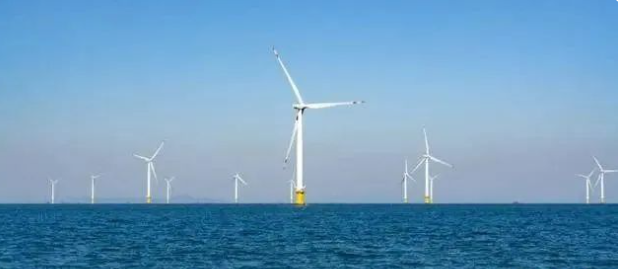- English
- Español
- Português
- русский
- Français
- 日本語
- Deutsch
- tiếng Việt
- Italiano
- Nederlands
- ภาษาไทย
- Polski
- 한국어
- Svenska
- magyar
- Malay
- বাংলা ভাষার
- Dansk
- Suomi
- हिन्दी
- Pilipino
- Türkçe
- Gaeilge
- العربية
- Indonesia
- Norsk
- تمل
- český
- ελληνικά
- український
- Javanese
- فارسی
- தமிழ்
- తెలుగు
- नेपाली
- Burmese
- български
- ລາວ
- Latine
- Қазақша
- Euskal
- Azərbaycan
- Slovenský jazyk
- Македонски
- Lietuvos
- Eesti Keel
- Română
- Slovenski
- मराठी
- Srpski језик
What is hydrogen production from seawater? Why so much attention? What are the technical difficulties?
2023-06-08
Why the success of the pilot test of hydrogen production by direct electrolysis of seawater has attracted so much attention? How difficult is that? What are the technical difficulties that need to be overcome to produce hydrogen by seawater electrolysis?
01
Hydrogen production from seawater
Hydrogen production by water electrolysis is considered to be a very important green hydrogen preparation technology. At present, the commercialized water electrolysis technology uses fresh water as the electrolyte. As we all know, the global fresh water resources are extremely limited, with the large-scale application of hydroelectricity to produce hydrogen, which undoubtedly aggravates the shortage of fresh water resources. In contrast, seawater is rich in resources, which gives rise to the idea of "seawater hydrogen production".

Unlike fresh water, which accounts for 96.5 percent of the Earth's total water volume, seawater has a complex composition involving more than 90 chemicals and elements. A large number of ions, microorganisms and particles contained in seawater can lead to problems such as side reaction competition, catalyst inactivation and diaphragm blockage during hydrogen production.
To this end, hydrogen production technology using seawater as raw materials has formed two different routes. First, the direct production of hydrogen from seawater, that is, based on natural seawater, is mainly produced by electrolysis or photolysis. Second, indirect hydrogen production of seawater is to desalinate and remove impurities from seawater, desalinate seawater to form high-purity fresh water first, and then produce hydrogen.
02
Two major advantages
Offshore hydrogen production platforms can be used as long-term storage of energy or production sites for fine chemicals, allowing green energy to be closely integrated with chemical production systems.
The offshore hydrogen production platform can solve the problem of the consumption of far-reaching Marine renewable electricity, and the use of renewable electricity to produce hydrogen and green ammonia on the spot may become the main application method of far-reaching Marine renewable energy in the future.

03
Technical difficulty
Technical difficulty 1: Many impurities in seawater affect the occurrence of cathode hydrogen evolution
In the process of electrolytic water, H2 is precipitated from the cathode, for the cathode hydrogen evolution reaction, the most challenging problem is that there are various dissolved cations in natural seawater, such as Na+, Mg2+, Ca2+, etc., in addition, there are a variety of bacteria, microorganisms and tiny particles.
These impurities will clog the electrode with the progress of seawater electrolysis, and then poison or accelerate the aging of the electrode/catalyst in the electrolytic system, resulting in poor durability.
Technical difficulty 2: chloride ions cause anodic corrosion and affect the anodic oxygen evolution reaction
In the process of electrolysis of water, O2 is usually precipitated from the anode. However, the presence of a large number of chloride ions (Cl-) in seawater will cause serious corrosion of the anode material, which will lead to electrode damage and high voltage, thus ending the efficient oxygen evolution reaction. In addition, the high concentration of chloride ions will also occur in the anode chlorine oxidation reaction, occupying the active site of the catalyst, thereby reducing the efficiency of the anode oxygen evolution reaction.
Technical difficulty 3: Competition between anodic oxygen evolution reaction and oxygen chlorination reaction
In the process of seawater electrolysis, the anode will undergo two reactions, namely: oxygen evolution reaction (OER) and oxygen chlorination reaction (ClOR). Oxygen evolution reaction: 4OH-→O2+H2O+4e-; E0=1.23V (vs. RHE)
Chlorine oxidation reaction: Cl-+2OH-→OCl-+H2O+2e-; E0=1.71V (vs. RHE)
It can be seen that the E0 of the two is similar, which will produce a competitive relationship, which greatly limits the working voltage of the electrolyzer. In addition, both the ClOR reaction and the hypochlorite formation are two-electron reactions, and the ClOR reaction is easier to perform kinetically than the OER four-electron reaction, so the OER overpotential is usually observed to be higher than that of ClOR.
04
Research status
At present, hydrogen production from seawater is still in the early stage of research and testing, and still faces many challenges, but the research and development of hydrogen production from seawater electrolysis has made some progress. In 2022, Academician Xie Heping's team made a major original breakthrough in the field of direct hydrogen production from seawater, and innovatively established a new principle and technology of direct hydrogen production from seawater without desalination driven by phase transition and migration. There are many demonstration projects of seawater hydrogen production at home and abroad, but they are still small-scale pilots, and most of them are under construction or proposed.

Although hydrogen production by seawater electrolysis has a long way to go from small and pilot tests to the final industrial wide application. However, we believe that in the trillion-level track of hydrogen energy, if this technology is eventually applied, it will leave the most profound ink on the road of "decarbonization"!





